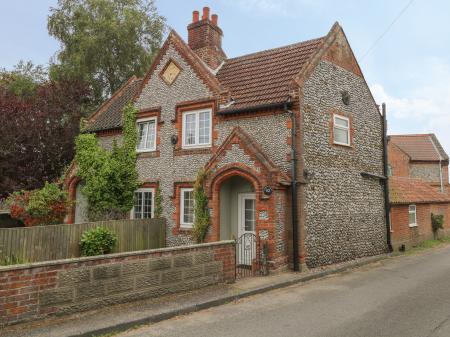

The park is especially noted for its flowering azaleas and rhododendrons. One nice touch at Sheringham Park is several viewing towers that you can mount to gain superb views over the surrounding area. A touch that perhaps more gardens could consider? A special Tree Trail leads past notable and unusual varieties of trees (which are generally well signed).
History
Abbot and Charlotte Upcher bought Sheringham estate in 1811, and one of the first things they did was to call in Humphry Repton to lay out a landscaped parkland around their new home of Sheringham House. Repton was a garden designer and architect, perhaps the last great landscape designer working on English stately homes and estates.
Repton actually coined the term 'landscape gardener'. He was a failed textile merchant, journalist, and dramatist before he hit upon the idea of using his interest in botany to become a garden designer, filling the gap created when Capability Brown died in 1783. Repton had the idea of marketing his services by creating a 'Red Book' for clients; a bound volume of sketches showing before and after views so that clients could visualise his proposals.
We still have the Red Book that Repton created for the Upchers at Sheringham Park. Repton considered Sheringham his favourite garden design, and called it his 'darling child'. Though Repton's design was adapted and altered by subsequent generations of owners, the parkland surrounding Sheringham House is still essentially as he laid it out. One thing Repton did not plant was the rhododendrons, for which the Park is known today; they were added in the late 19th century.
Garden Highlights
The Woods
The first area you come to as a visitor to Sheringham is a large area of woodland, with trails winding sinuously through mature trees and flowering shrubs. Some of the woods already stood when Repton came here, and oak trees follow the line of earlier hedgerows.

Humphry Repton's woods
The Temple
From the woods a trail leads across an open meadow to The Temple, a neoclassical domed temple in Greek style upon the brow of a hill, looking down on Sheringham House. Repton did not design the Temple, though his initial proposal called for a similar temple in a different part of the garden. Though it looks original, the Temple was added by the Upcher family in the 1970s, making it one of the newest garden features.
The Turn
The main trail from the visitor centre passes through the woods, slowly winding downhill until it emerges from the trees and turns sharply to present a view across sloping fields to the mansion house. This is a key feature in Repton's design. The trail through the woods was designed to prevent views of the house until you emerge from the woods, turn, and suddenly see the house below you.
The Gazebo
The route leads past the house, which is closed to the public and up a short rise to a treed hill. At the top of this hill, obscured until you reach the summit, is The Gazebo, a viewing platform built on the site of a Napoleonic War watchtower. The views from the top of the Gazebo are spectacular; the National Trust calls them the best views in Norfolk, and you can see for miles across the low-lying parkland to the coast beyond.
Sheringham Park is a place you can easily spend hours, walking through a mix of open fields and shady woodland. Though there have been major changes since Humphry Repton laid out the parkland, it is essentially still his work, a natural landscape of trees, lush flowers, and carefully planned vistas taking in some of the most beautiful landscape in Norfolk.
There is a visitor centre and exhibition on Repton and his life near the Park entrance, and colour-coded circular trails throughout the woodland and fields beyond.







 We've 'tagged' this attraction information to help you find related historic attractions and learn more about major time periods mentioned.
We've 'tagged' this attraction information to help you find related historic attractions and learn more about major time periods mentioned.




